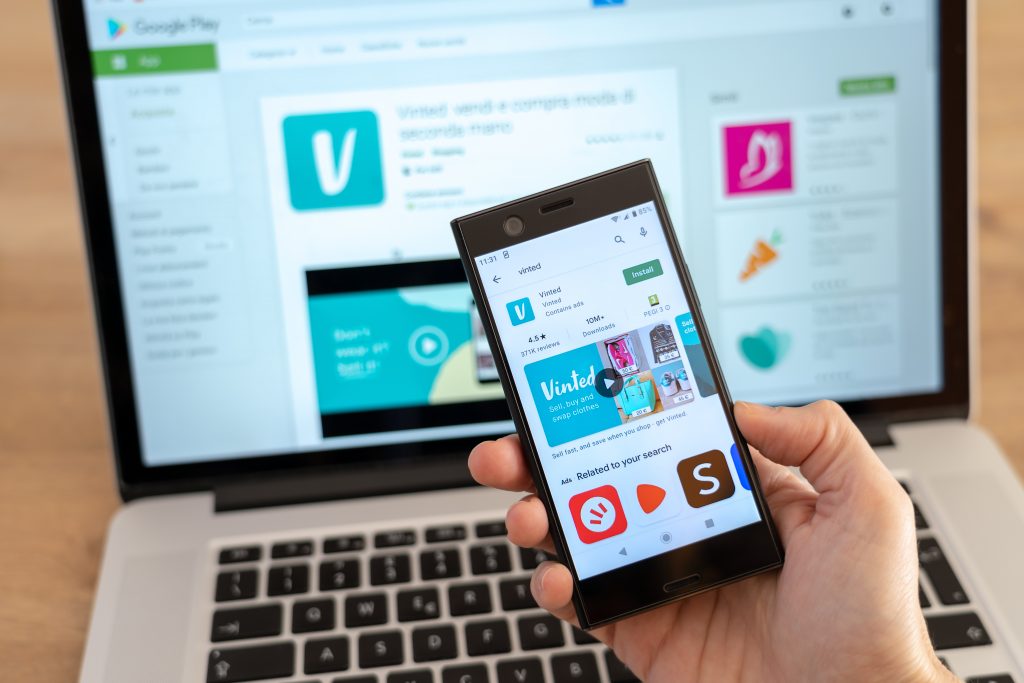
1. Introducing
The Mobile App Duel: PWAs vs Native Apps
Delving into the tech sphere, PWAs and Native Mobile Apps are both vital players. Each offers distinct advantages, complicating the selection process. Let’s explore them:
Progressive Web Apps (PWAs)
PWAs are responsive and compatible across platforms. They also:
- Update independently
- Are built using common web tech like HTML, CSS, JavaScript
- Are quick, lightweight, and easily discoverable
- Incur lower costs for development and upkeep
Native Apps
In contrast, Native Apps offer immersive user experiences, but:
- Can be costly to develop and maintain
- Face app store regulations and slower deployment
- Often lack cross-platform compatibility
Your choice between a PWA and a Native App would need to be informed by your unique needs, targets, audience, and financial considerations. Go for speed and cost-effectiveness with a PWA; opt for immersive, interactive experiences with Native Apps.
Ultimately, there isn’t a one-size-fits-all answer. PWAs and Native Apps excel in their own niche. Weigh each option to discern what suits you. Technology continues to evolve, as does this debate. What remains paramount is a seamless user experience, regardless of the route taken to achieve it.

2. Understanding PWAs and Native Apps
As we increasingly rely on the digital sphere, Progressive Web Apps (PWAs) and native apps have taken center stage in mobile application development. To help you determine which best meets your needs, we will unpack their unique attributes, strengths, and weaknesses.
| Progressive Web Apps (PWAs) | Native Apps | |
|---|---|---|
| Basic Features |
|
|
| Advantages |
|
|
| Disadvantages |
|
|
| Suitability |
|
|
3. When to Use?
Choosing between progressive web apps (PWAs) and native apps isn’t just tech talk. It’s a crucial decision for businesses and developers. Our guide will clarify this choice for you, factoring in your unique needs and objectives.
3.1. When is it better for your company to develop a PWA instead of a Native App?
Consider PWAs when:
- You desire a cost-effective, cross-platform solution.
- You need to reach a wide audience with different device types.
- You want an app that’s faster to build and maintain.
- Your app requires frequent updates without app store approval.
- You aim for better visibility on search engines.
- Your app needs to work in offline or low-network conditions.

3.2. When is a Native App more suitable for your business than a PWA?
Consider Native Apps when:
- Your audience is mobile-first, requiring advanced functionality.
- Your app relies heavily on mobile-specific features and interactions.
- Your service has high-performance requirements.
- Your users prefer downloading from traditional app stores.
- Your target demographic lives in areas with slower internet speeds.
Always keep your business needs, user expectations, and technological demands at the forefront when choosing between PWAs and native apps.
3.3. Steps to Determine Whether Your Project Should Be a PWA or a Native App
Deciding between a PWA and a Native App requires critical evaluation. Let’s simplify this with the following key steps:
Step 1: Define Your Business Goals
Understand what you aim to achieve with your app.
Step 2: Identify Your Target Audience
Recognize who your audience is and their device preference.
Step 3: Evaluate Functionality Needs
Assess the necessary functionalities of your app.
Step 4: Consider Time and Budget Constraints
Consider your project timeline and budget limitations.
Following these steps will guide your decision to choose between a PWA or a Native App that aligns with your business and user needs.
4. Examples and Real-World Applications
Today, we’re diving into the tech world’s latest buzz – Progressive Web Apps (PWAs) and Native Mobile Apps. Along with highlighting their characteristics, advantages, and disadvantages, we’ll explore ideal implementation scenarios, real-world business applications, and what’s in the pipeline.
“Wisdom is knowing that knowledge is endless.”
Geeta Iyengar
4.1. Use Cases
4.1.1. PWAs
Content-Centric Apps: Washington Post & Lancôme
PWAs shine when applied to content-centric applications, delivering seamless and engaging user experiences. For instance, the Washington Post PWA significantly improves load times and delivers a consistent reading experience when offline. Contrarily, Lancôme’s PWA has dramatically increased mobile sessions and conversions, contributing to greater user interaction.
Straightforward Functionality Apps: Uber & Starbucks
PWAs perform exceptionally in apps requiring simple functionalities, such as push notifications and offline capability. Uber’s PWA, for example, remains functional in areas with poor connectivity. Likewise, Starbucks’ PWA allows users to place orders offline, ensuring even weak internet connections won’t keep you from your caffeine fix.
4.1.2. Native Apps
Native Apps, on the other hand, are optimal choices when the app requires intensive graphics performance, needs to provide offline utilities, or uses the device’s functionalities to deliver an immersive user experience.
Gaming and Multimedia Applications
Consider your most-loved games or multimedia apps. These typically require robust device functionalities and high-performance graphics, for which Native Apps are more suitable.

Productivity Tools
Think about productivity apps such as Adobe Photoshop or Gmail. Their complex algorithms and offline utilities make them better suited as Native Apps.
Exploiting Offline Device Capabilities
Then there are those applications that go the extra mile in providing superior interactions thanks to the effective usage of the device’s offline functions. It’s in this area that Native Apps basically outshine PWAs.
4.2. Real-World Applications
4.2.1. PWAs: Pinterest, TikTok, Spotify
Let’s examine a few real-world examples. Pinterest’s PWA dramatically improved user time spent, ad revenue, and overall user engagement. TikTok’s PWA simulates a mobile app experience without needing an actual download. Meanwhile, Spotify’s PWA enables users to access their music anytime, anywhere, regardless of the device, thus being a lifesaver for those with limited storage.

4.2.2. Native Apps: Jumia, Snapchat, WhatsApp
Conversely, Jumia’s Native App offers its Africa-based users exclusive deals and a seamless purchase experience. Snapchat leverages advanced AR technology, fusing it with smartphone hardware for a remarkably superior experience. WhatsApp offers a seamless messaging platform packed with unique features like end-to-end encryption and easy synchronization with phone contacts and media.
5. Which Is Better in 2024?
In the battle of PWAs and native apps, both have their merits. Here’s a prediction for 2024:
- PWAs: Their user-friendliness and lower costs could propel popularity, but browser optimization challenges may arise.
- Native Apps: Their excellent performance and sophisticated features will keep them essential. However, small companies may baulk at maintenance and update costs.
We’ve compiled a comparison table for key functionalities:
| Factor | PWAs | Native Mobile Apps |
|---|---|---|
| Speed | Fast load times | Run on devices directly |
| Offline Access | Content caching | Inherent offline access |
| Compatibility | Uniform on all devices | Optimized for each platform |
| User Experience | Strive for native app UX | Unrivalled UX due to platform-specific UI |
| Device Feature Access | Limited in some areas | Fully functional with device features |
Key highlights for 2024 include a 22.5% increase in businesses creating PWAs, and ‘PWAs’ search queries skyrocketing on Google Trends. PWAs load 1.5x faster than native apps, enhancing user engagement by 50%. Still, 80% of users prefer the superior UX of native apps. Interestingly, the cost-effectiveness of PWAs drives 62% of businesses towards their adoption, reducing development and maintenance costs.
As 2024 unfolds, we expect a balanced usage of both. However, they need not compete but harmonize, allowing businesses to leverage each based on different needs.

6. The Rise of PWAs: Offering Alternative Functionalities
PWAs have come a long way, now offering features, like offline working and push notifications, that were once solely the realm of native apps. Let’s illustrate their emerging viability with three key points:
- Unique Qualities: PWAs offer cross-platform compatibility, low maintenance cost, and search engine discoverability, giving them an edge over native apps.
- Not a One-Size-Fits-All Solution: While PWAs shine in many areas, they might not replace native apps for high-performance applications or specific functionalities requiring advanced device capabilities.
- Depends on Business Needs: Choosing between a PWA and a native app hinges on your business’s specific needs and objectives.
In essence, while PWAs may not substitute native apps in all cases, they’ve become formidable alternatives for a variety of functionalities.
7. Considerations and Limitations
In choosing between PWAs and native apps, understanding key performance factors and potential limitations is pivotal.
7.1. Access to Device Features
- Designed specifically for a particular operating system.
- Access to a wide range of device features.
- Considerable strides in access to device features.
- Might have restricted access to advanced hardware capabilities.
7.2. Discrepancies in User Experience
- Seamless UI/UX that aligns with the device’s operating system.
- Provides app-like interactions and navigation.
- User experience might vary across different devices and browsers.

7.3. App Store Visibility
- Advantaged by their discoverability through app stores.
- Lacks visibility due to being web-based.
7.4. Performance and Speed
- Usually offer a faster and more fluid user experience.
- Web-based, that may face performance and speed challenges.
- Well-built PWAs offer speed and performance similar to native apps.
7.5. Development and Maintenance Costs
- Costly to develop and maintain.
- Require platform-specific development.
- Developed using common web technologies, hence lower costs.
- Maintenance is easy and cost-effective.
8. Conclusion: PWAs or Native Apps?
PWAs and Native Apps come with their unique strengths and limitations. The choice between these two should be influenced by your business requirements, user experience preferences, and the functionality needed for your application.
PWAs offer cross-platform compatibility, independent updates, low maintenance cost, and built with web technologies like HTML, CSS, and JavaScript, making them an appropriate option for content delivery or simple function applications.
On the other hand, for applications that demand heavy multimedia, detailed productivity tools, or extensive use of offline device capabilities, Native Apps may be preferable. They provide superior access to device features, uniform user experience, and improved visibility in app stores.
Remember to evaluate your business goals, your intended audience, required functionality, plus time and budget constraints before choosing a mobile solution for your business. This will help you make an informed decision between PWAs and Native Apps.
9. Questions Often Raised by Readers Regarding This Article
Well, let’s simplify it for you! The key distinction between Progressive Web Apps (PWAs) and Native Apps lies within their development and performance. While PWAs are web applications that act like native apps, providing a smooth user experience across multiple platforms, Native Apps are developed specifically for a particular operating system, delivering high performance with full access to mobile device capabilities.
If your focus is on online gaming that requires complex functionalities and accessing various device capabilities, then a Native App may be a more appropriate choice. Native Apps are more suitable for intricate operations that might be challenging for PWAs to achieve.
Yes, you heard right! Since PWAs only need to be developed once and still provide almost similar capabilities to Native Apps on multiple operating systems, they tend to be cost-effective options for businesses. This reduces cost and time spent on development as compared to creating multiple native versions for each operating system.
We’d love to say yes, but unfortunately, the answer is more nuanced. While PWAs have indeed made strides in bridging the performance gap with Native Apps, the latter still has the upper hand in terms of power and functionality, especially when it comes to tasks that require full device integration.
It’s difficult to say definitively! Both PWAs and Native Apps have their own strengths and weaknesses. For now, your choice should depend on the unique needs and goals of your business. But with advancements in technology, this might change in the future, with PWAs potentially becoming more comparable to Native Apps as they continue to evolve.
References and Resources
Below, you’ll find all the resources and references that were instrumental in creating this comprehensive article on the comparison between PWAs and Native Apps:
- Documentation and Reference Materials on Progressive Web Apps
- Online Tutorials and Guides on PWAs from Google
- Description of iOS 13 (Native App Platform)
- Description of Android (Native App Platform)
- Scope of Mobile App Development: A Comprehensive Guide
- Innovative UX Design Trends in Software Development
- Enhancing Security in Software Development: Key Practices


